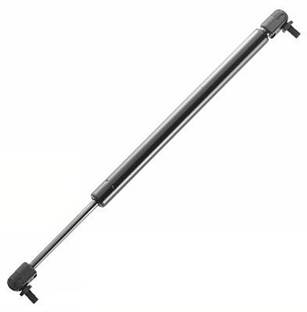Interior

Gas Springs ReplacementThe size of the gas spring market is widely underestimated. Nearly every vehicle has at least two fitted (commonly known as boot and bonnet struts), representing a massive sales opportunity for distributors and their workshop customers.
A common belief, echoed throughout workshops, is that replacement gas springs are only available direct from dealerships, but this is not the case. Over the last 5 years the replacement gas spring market has seen steady and consistent growth. To continue this growth and to benefit from the sales opportunities, it is essential that workshops are aware of how to spot a failing or faulty gas spring and that they understand the importance of replacing them in pairs.
How does a gas spring work? Gas springs are designed in a similar fashion to shock absorber struts. They are made up of a chamber tube, piston, piston rod and end fittings. The chamber contains highly pressurised nitrogen gas which forces the piston rod to extend. The gas pressure is set during manufacture to obtain the correct spring force depending on, for example, the weight of the rear hatch. As the spring compresses there is less volume in the tube, forcing gas through valves in the piston and thereby increasing the suspension. The gas spring contains some oil to lubricate the seals, piston and piston rod. The oil also provides a damping effect when the spring nears full extension. Why do gas springs fail? There are two main reasons for gas spring failure: Firstly, dirt and other particles from the air get inside the spring causing long term damage. The dirt collects on the piston rod whilst it is extended so that, when compressed, it mixes with the gas and oil. This causes progressive damage to the chamber seal, eventually causing the spring to fail. The second (and most common) reason for failure of gas springs is the loss of the high pressure nitrogen gas and lubricating oil found inside the spring. This loss generally happens when the seal inside the spring becomes damaged or worn. It is also worth noting that as the seal is made from rubber it will naturally crack and corrode over time, leading to the escape of gas and oil, and finally resulting in total failure of the spring. Why should you replace your gas springs? Although a damaged or faulty gas spring may not have an adverse effect on handling or performance, it may cause an accident if not replaced. An accident may occur due to the spring losing necessary pressure in the chamber. This will result in significantly reduced damping effect when the spring is extended, causing the boot or bonnet to fall quickly and sharply with the potential to trap fingers and damage limbs or the head. As with anything that works in pairs, such as brakes or suspension, gas springs should always be replaced in pairs. If only a single spring is replaced, additional strain will be placed on the remaining unit – strain which it is not designed to deal with – and failure of that unit would most likely occur soon after, with the potential to cause injury. Replacing your springs The following are some key points for factors and garage technicians to consider when replacing gas springs: • Do not try to open a gas spring – it is filled with oil and high pressure gas! • For safety, gas springs should always be replaced in pairs. • Before fitting a gas spring, compare its design, length and fitting points against the original part to ensure the correct part has been selected. • Check the fitting points on the body of the vehicle and repair or replace them if damaged. • There is a risk that the weight of the tailgate could be too heavy for a gas spring designed with OE elevating power if the car has been fitted with extra equipment such as spoilers or blinds. • A gas spring’s elevating abilities deteriorate progressively as temperatures get colder. • Because the gas spring holds open the tailgate or bonnet, workshops must ensure that when replacing the unit there is some other means of support to avoid the risk of injury. Kilen supplies a complete range of OE replacement gas springs direct from stock. Applications are available for most makes and models of European and Asian vehicles with stock availability consistently over 98% on over 1,000 parts.
|
Related Articles |

